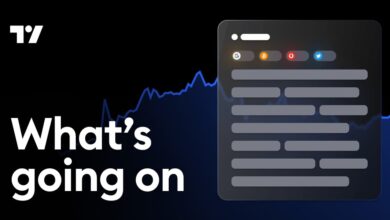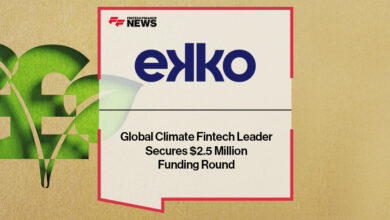What Next in the Future of Open Banking?

The impact the Payments Services Directive 2 (PSD2) has had on European financial institutions cannot be understated. A European Parliament Directive, PSD2 essentially makes third-party data sharing easy between financial organisations, payments providers and other bodies, making it possible to build new products and power better customer experiences.
In the US, third-party data sharing between financial services providers, or Open Banking, has been driven by the market to match the scale of innovation seen in the EU.
Since its introduction in 2018, Open Banking hasn’t just evolved but “exploded”, according to GoCardless Chief Product Officer Andy Wiggan.
“That we’ve gone from introducing ‘Open Banking’ as a theoretical concept in 2016 to one in seven digitally active UK consumers having used the technology today is testament to exactly how far we’ve come,” he says.
Not only has PSD2 introduced API standardisation to enhance the ease of transferring data, but it also bolstered standardised security measures across data-sharing partners.
It also mandates strong customer authentication (SCA) which requires two types of customer authentication to reduce fraud and make online financial transactions more secure.
As Raouf Mhenni, Chief Commercial Officer at Sopra Banking Software explains: “Before PSD2 was introduced, Open Banking operated within constraints and relied heavily on screen scraping–or collecting data from one application to then translate it to another–done by Third-Party Providers (TPPs) to access financial data.
“This was not only unreliable and insecure, but it left customers with little control over their data. Not to mention that it encouraged little innovation.”
It is this subsequent innovation – in the space of six years – that has been seen and felt by consumers the most.
Bart Willaert, EVP of Open Banking International Markets at Mastercard, says Open Banking has led “to smarter and more meaningful digital experiences, putting consumers at the centre of where and how their data is used”.
Mhenni adds: “PSD2 introduces a way for banks to seamlessly connect and exchange data. This allows consumers to bring all of their financial information together and do more, with less movement across accounts and apps.
“For instance, we’re seeing a rise in pay-by-bank which is when customers can securely pay online directly from their bank account. Without PSD2 this wouldn’t be possible.”
The scale and popularity of Open Banking is only headed in one direction too, upwards. Willaert cites a Forrester report suggesting from 2022, the number of Open Banking users in Europe will double by 2027.
The scope for further growth in Open Banking makes Wiggan believe we’re still in the “early days” of its use, particularly given additional regulation and innovation being introduced to further fuel its growth.
“With the ‘Phase I’ rollout of commercial Variable Recurring Payments (VRPs) due to start later this year, payers can experience the benefits across even more use cases,” continues Wiggan. “For example, VRPs can help consumers with donating regularly to charities or moving money across their preferred saving and investment applications.”
PSD3: Augmenting Open Banking for increased adoption
Indeed, the significant rise of Open Banking is set to be helped along further by the introduction of the EU’s third Payments Services Directive (PSD3), set to come into effect in 2026.
While not as revolutionary as PSD2, Mhenni believes “PSD3, along with its counterpart Payment Service Regulation (PSR), will standardise Open Banking expectations and practices across the financial services industry in a way that PSD2 has not”.
He continues: “PSD3 promises to enforce uniform Open Banking processes across all European countries, unlike the varying approaches that have been implemented from country to country under PSD2.
“Whereas PSD2 left some room for interpretation as far as how each country went about implementing Open Banking, PSD3 enforces more stringent oversight and puts penalties in place for any non-compliance.”
What’s more, PSD2’s mandate for secondary ‘fallback interfaces’ – a safety net for institutions put in place in case their main data APIs cannot properly support Open Banking, will no longer be required under PSD3.
Mhenni comments: “This is a huge step in incentivising banks to shed the legacy infrastructures that they’ve been holding onto for years and move forward with large-scale digitisation initiatives.”
Other regulatory augmentations of PSD3 look set to come in the Strong Customer Authentication (SCA) space, which will enable customers to make required security changes every 180 days as opposed to every 90 days under PSD2.
Beyond PSD3: A boundless future for Open Banking
Of course, PSD3 only applies to payments, and other initiatives like Financial Data Access (FIDA) look set to broaden the range of the EU’s work to accelerate a continent-wide shift to Open Banking, by applying similar guidelines to insurance, investments and savings industries.
Willaert notes: “FIDA will bring new opportunities for the whole financial ecosystem; opening access to a wider range of financial data, improving consumer protection, innovation and competition in financial services.
“While there are tremendous opportunities in terms of a framework, we need innovators to create the new products and services and we also need consumer trust in the safety, security and value of this new technology to help fuel it.
“It’s taken years for payments account data to be ready for widespread product and service value-add. So, we must work together to create the early use cases and build from there.
“The real value will be found in the cross-vertical use cases; a loan plus insurance plus payment, for example, could really make life easier for a home or car buyer – simplifying and smoothing the path.”
It is in this way that the future of Open Banking may not even truly be Open Banking. Well, it will, but ‘banking’ could be part of a much wider ecosystem of interconnected services that streamline a consumer’s products, services and applications into one.
“We’re moving away from just Open Banking to open finance and smart data,” says Willaert. Open finance will, and already does, enable companies of all kinds to offer Banking-as-a-Service (BaaS) capabilities and platform banking.
“This is where banks integrate products and services from the larger financial ecosystem into their offerings to enrich the user experience,” notes Mhenni.
He continues: “ Leveraging Open Banking, these business models create experiences that are akin to super apps in the sense that they offer a blend of traditional banking services and more lifestyle-oriented services such as travel perks, insurance and rewards—all in one place.
“Open finance is gaining traction beyond traditional banking. Non-banking players like energy providers, telecommunications companies and insurers are embracing Open Banking to enhance customer service and gain deeper insights.”
Laura Friend, UK Enterprise Lead at Amplitude, concludes: “With a deeper understanding of their customers, companies can make targeted improvements that create effective, and enjoyable, digital experiences.
“Whether users are looking to move money, check their credit score, or make a loan payment, they want a seamless, fast experience, even if it involves moving between different products and applications.”
**************
Make sure you check out the latest edition of FinTech Magazine and also sign up to our global conference series – FinTech LIVE 2024.
**************
FinTech Magazine is a BizClik brand.



